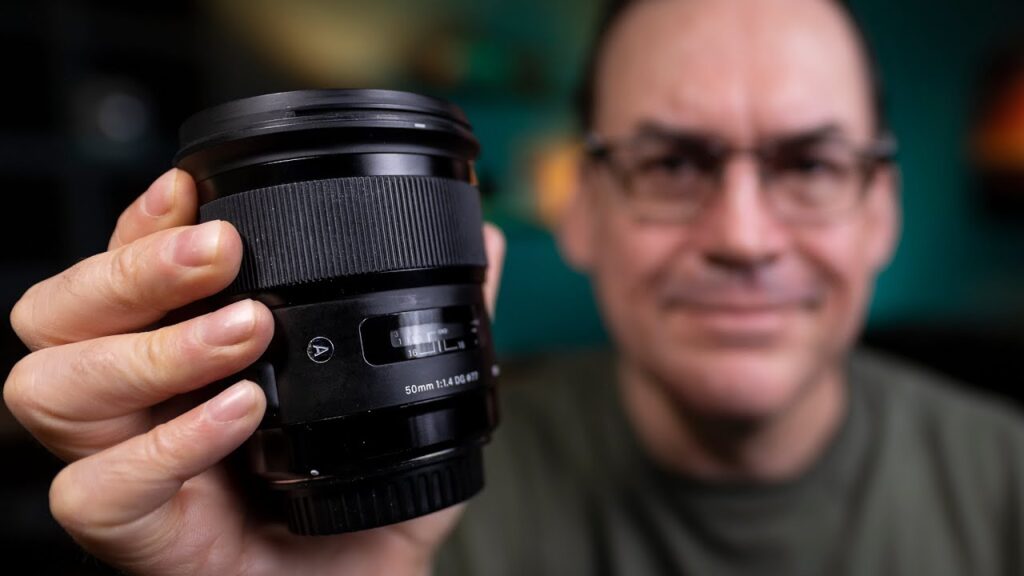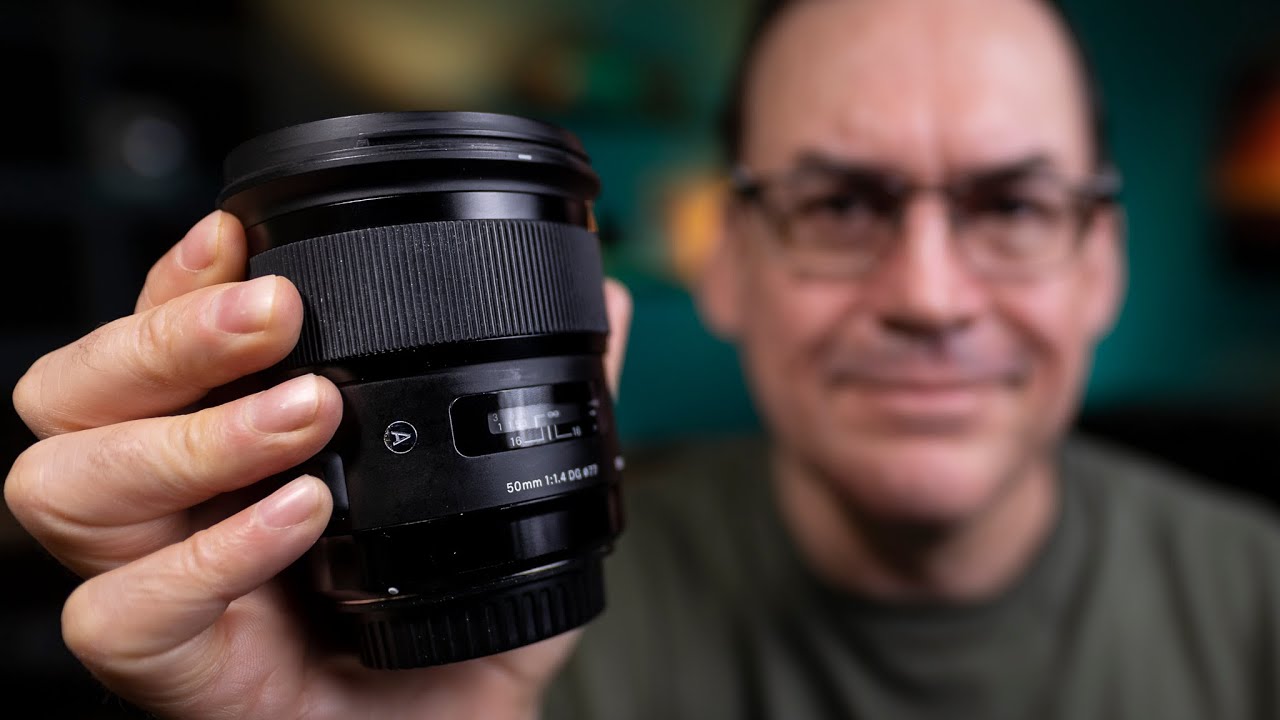In the fascinating world of photography, lenses serve as your essential tools to capture stunning images. From the versatility of zoom lenses to the sharp precision of primes, understanding the unique features of each lens type can elevate your photography game. Whether you’re curious about the difference between fast and slow lenses or the significance of aperture and focal length, Simon d’Entremont, a seasoned wildlife and nature photographer from Eastern Canada, is here to guide you through the maze of choices.
This video not only breaks down the various types of lenses but also delves into their key characteristics and trade-offs. With Simon’s professional insights, you’ll learn how to pick the right lens for your specific needs and situations. Plus, he shares techniques using Topaz Labs software to enhance your photos and introduces his new comprehensive wildlife photography course. Get ready to enrich your skillset and make informed decisions the next time you venture into the lens market!

This image is property of i.ytimg.com.
Lens Types
Welcome to the fascinating world of lenses! As a budding photographer, it’s essential to understand the different types of lenses and how they affect your photos. Let’s dive in together, starting with the basic categorization of lens types.
Prime vs. Zoom
When choosing lenses, you’ll often hear about prime and zoom lenses. Prime lenses have a fixed focal length, meaning they have a consistent field of view and cannot zoom in or out. These lenses are known for their image sharpness and larger apertures, which allow more light to enter—perfect for low-light conditions and achieving beautiful background blur.
Zoom lenses, on the other hand, offer a range of focal lengths within a single lens. This means you can switch from a wide-angle shot to a closer, more focused shot without changing lenses. These are incredibly versatile, making them very popular for various types of photography, from landscapes to sports.
Fast vs. Slow
The speed of a lens refers to its maximum aperture. Fast lenses have large maximum apertures (small f-numbers like f/1.4), allowing more light to hit the sensor, which is ideal for low-light settings and achieving that creamy, out-of-focus background (bokeh). Slow lenses have smaller maximum apertures (larger f-numbers like f/5.6), and while they might not be the best for low-light conditions, they’re often more affordable and lighter, making them great for travel photography.
Wide-angle vs. Telephoto
The classification of lenses also includes wide-angle and telephoto lenses. Wide-angle lenses have shorter focal lengths (such as 16mm) and provide a broad field of view, perfect for capturing expansive landscapes or crowded city scenes. Telephoto lenses, with longer focal lengths (like 200mm), allow you to zoom in close on distant subjects, which is handy for wildlife photography or sports.
Importance of Understanding Lens Attributes
Understanding these basic attributes—whether a lens is prime or zoom, fast or slow, wide-angle or telephoto—will empower you to make informed decisions based on your photography needs. Knowing what to look for will improve your ability to capture the images you envision.
Focal Length
Let’s explore focal length in more detail; it’s a key factor in understanding how your lens will interact with the scene you want to capture.
Definition and Significance
Focal length, measured in millimeters (mm), is the distance between the lens and the image sensor when the subject is in focus. It significantly affects the field of view and magnification of your images. Shorter focal lengths provide wider views, while longer focal lengths offer more zoomed-in, detailed shots.
Example Focal Lengths: 16mm, 30mm, 50mm, 200mm, 500mm
To grasp how focal lengths alter your photos, consider a range of examples:
- 16mm: Ultra-wide-angle lens ideal for expansive landscapes or tight indoor spaces.
- 30mm: Still wide but slightly more constrained than 16mm, good for environmental portraits.
- 50mm: Often referred to as the “nifty fifty,” this is a standard lens great for portraits, street photography, and general use.
- 200mm: A telephoto lens that brings distant subjects closer—excellent for wildlife and sports.
- 500mm: Super-telephoto lens, perfect for very distant subjects like birds or action during sports events.
Impact on Image Magnification and Field of View
The focal length directly impacts both the magnification and the field of view. A 16mm lens captures a broad scene but with less detail magnification. Conversely, a 500mm lens zeroes in on a distant subject, providing much greater detail but a narrower field of view. Matching the focal length to your subject and setting is key to getting the shot you want.
Sensor Size
Beyond lenses, your camera’s sensor size plays a crucial role in how your images turn out. Let’s delve into sensor sizes and their effects.
Full-frame vs. Crop Sensors (APS-C)
Full-frame sensors are equivalent in size to 35mm film and offer a wider field of view compared to smaller sensors. Crop sensors (APS-C) are smaller and effectively “crop” the image, providing a narrower field of view.
Effect of Crop Sensors on Focal Length
A crop sensor has a multiplication factor (typically 1.5x for APS-C and 2x for Micro Four Thirds). For instance, a 50mm lens on an APS-C sensor camera effectively acts like a 75mm lens on a full-frame camera. This crop factor is crucial for photographers transitioning between sensor sizes as it influences their choice of lenses.
Differences in Field of View and Effective Focal Lengths
The field of view is less on crop sensors because of their smaller size, making them more “zoomed in” compared to full-frame sensors. Understanding effective focal lengths (considering the crop factor) is essential in achieving your desired compositions.
Aperture
Another critical aspect of lenses is the aperture, affecting both lighting and the depth of field in your images.
Impact on Light Gathering and Depth of Field
Aperture refers to the opening in a lens through which light enters the camera. A wider aperture (lower f-number like f/1.4) allows more light, making it ideal for low-light photography. It also results in a shallow depth of field, creating pronounced background blur. Conversely, a narrower aperture (higher f-number like f/16) lets in less light and increases the depth of field, keeping more of the scene in focus.
Explanation of f-numbers (e.g., f/1.4)
f-numbers are ratios describing the size of the lens aperture. An f/1.4 aperture is wide, allowing much light and creating a shallow depth of field. An f/22 aperture is narrow, admitting less light but providing a deeper depth of field. These numbers might seem confusing at first, but they are crucial for controlling exposure and creative effects in your photos.
Importance in Low-light and Background Blur
In low-light situations, faster lenses with larger apertures (smaller f-numbers) become invaluable. They not only collect more light but also enable faster shutter speeds, reducing the risk of motion blur. Additionally, a wide aperture creates lovely background blur, making your subject stand out sharply against a pleasingly soft backdrop—which is highly prized in portrait and wildlife photography.
Prime vs. Zoom Lenses
Deciding between prime and zoom lenses can significantly impact your photography style and techniques.
Characteristics of Prime Lenses
Prime lenses have a fixed focal length, which means they usually offer superior image quality due to fewer moving parts and simpler optical designs. They often have larger apertures, making them capable of capturing more light and producing beautiful bokeh. However, they lack the flexibility of zooming in and out, requiring you to move physically to frame your shots.
Characteristics of Zoom Lenses
Zoom lenses provide a range of focal lengths, making them incredibly versatile for various types of photography without having to switch lenses. This flexibility is their main advantage, allowing photographers to capture wide landscapes and tight portraits with a single lens. The trade-off is that zoom lenses often have smaller maximum apertures, which can limit their performance in low-light conditions and affect their ability to create background blur.
Trade-offs Between Flexibility and Optical Quality
The choice between prime and zoom lenses involves trade-offs between flexibility and optical quality. Prime lenses deliver superior sharpness and low-light capabilities but lack versatility. Zoom lenses offer convenience and adaptability at the cost of potentially reduced sharpness and smaller apertures. Your decision will depend on your specific photography needs and shooting style.
Mount Types
Understanding lens mounts is crucial to ensuring compatibility between your lenses and camera bodies.
Compatibility with Camera Mounts
Lens mounts are the mechanical and electrical connections between the lens and the camera. Different manufacturers use different mounts, and even within a single brand, there might be variations. Knowing whether a lens is compatible with your camera mount is essential before purchasing it.
Full-frame Lenses on Crop Sensors
You can mount full-frame lenses on crop sensor cameras, but the effective focal length will be altered due to the crop factor. A 50mm full-frame lens will behave like a 75mm lens on an APS-C camera. This can be advantageous for getting more reach, but it might also affect the image quality and field of view.
Impact on Image Quality When Reverse Mounted
Sometimes photographers reverse-mount lenses for macro photography, using the lens backwards to achieve extreme close-ups. While this method can be effective and more affordable than buying a dedicated macro lens, it can negatively impact image quality, particularly around the edges of your photos.
Additional Lens Attributes
Besides the main characteristics, there are additional attributes you should consider when choosing lenses.
Minimum Focus Distance
Minimum focus distance is the shortest distance at which a lens can focus on a subject. Lenses with a shorter minimum focus distance are great for close-up shots, making them perfect for macro photography or detailed shots of small subjects.
Weather Sealing
Weather-sealed lenses are designed to withstand dust, moisture, and extreme temperatures. This feature is especially crucial for outdoor photographers who shoot in unpredictable conditions, ensuring their gear remains functional regardless of the weather.
Thread Size for Filters
The thread size indicates the diameter of filters that fit the lens. Filters, such as polarizers and ND filters, screw onto the front of the lens, and knowing the thread size ensures you purchase the correct ones.
Image Stabilization
Image stabilization is a valuable feature that helps reduce camera shake, resulting in sharper images, especially at slower shutter speeds. This is particularly useful in low-light conditions or when using telephoto lenses.
Adapters
Adapters can greatly expand the versatility of your camera system by allowing you to use lenses from different mounts.
Compatibility Between Different Camera and Lens Mounts
Lens adapters enable compatibility between different camera and lens mounts, making it possible to use lenses from various brands on your camera body. For instance, you can use a Canon lens on a Sony camera with the right adapter.
Example: Adapting DSLR Lenses to Mirrorless Cameras
As mirrorless cameras gain popularity, many photographers want to use their existing DSLR lenses on these new bodies. Adapters make this transition smooth, allowing you to continue using your favorite lenses while exploring new camera technologies.
Conclusion
Before we wrap up, let’s mention the Speed Booster adapter. This nifty device allows you to use full-frame lenses on crop sensor bodies without losing field of view. It even increases the maximum aperture, providing more light and better depth of field control.
When choosing the right lens, consider your specific photography needs, whether it’s low-light performance, background blur, or versatility. With the knowledge from this guide, you’ll be well-equipped to make informed decisions that enhance your photography.
Don’t forget to subscribe and like if you found this information helpful! Implementing these tips will undoubtedly improve your photography, helping you capture stunning images with confidence.
Call-to-Action
For more in-depth details on sensor sizes, check out our additional video on the topic. Stay tuned for future content where we’ll dive into more photography tips and techniques. Happy shooting!

